Strength Training for Throwers (Detailed Program)
Author:
Reviewed by:
(21 years of Oly Lifting experience)
Unlock your full potential by engaging with our experts and community! Have questions about your fitness journey or looking for expert advice on weightlifting techniques? Don’t hesitate — leave a comment below and Sergii Putsov will provide a personalized answer and insights to help you reach your goals.
Torokhtiy is reader-supported. Some links are affiliate links, and we may earn a commission at no extra cost to you. See our disclosure page for details.
If you are a thrower, you will likely seek ways to achieve peak performance. This is why you are looking for a lifting program for throwers.
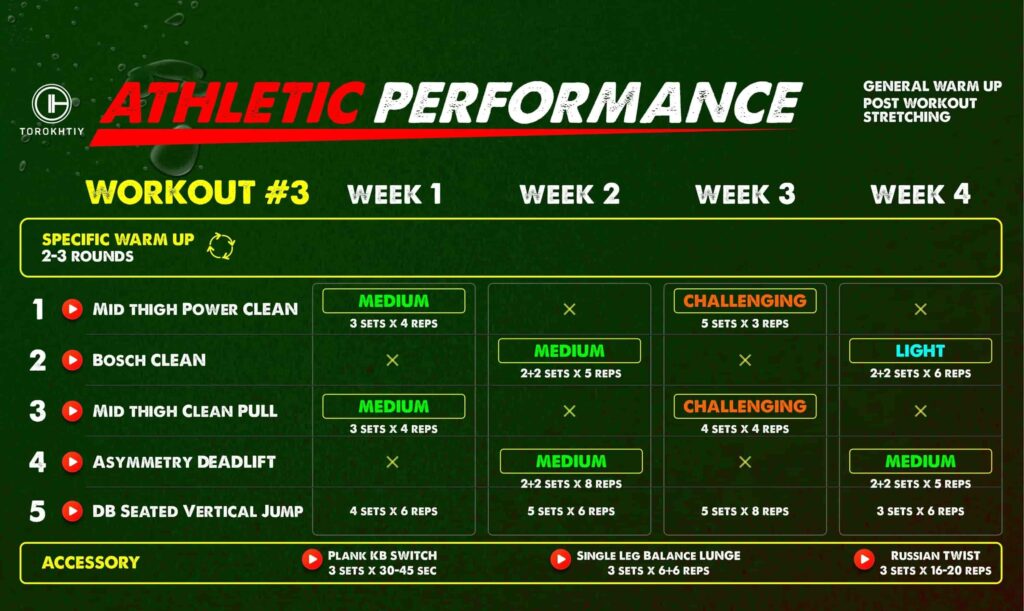
The following article will look at the benefits of weight training for throwers, the best exercises to perform, and how to design an effective training program that will suit your needs.
A lifting program for throwers is a vital part of any training program. Squats, deadlifts, overhead presses, and core exercises will help increase power and explosiveness, prevent injury, and improve athleticism. All of which will result in consistent and improved distances thrown.
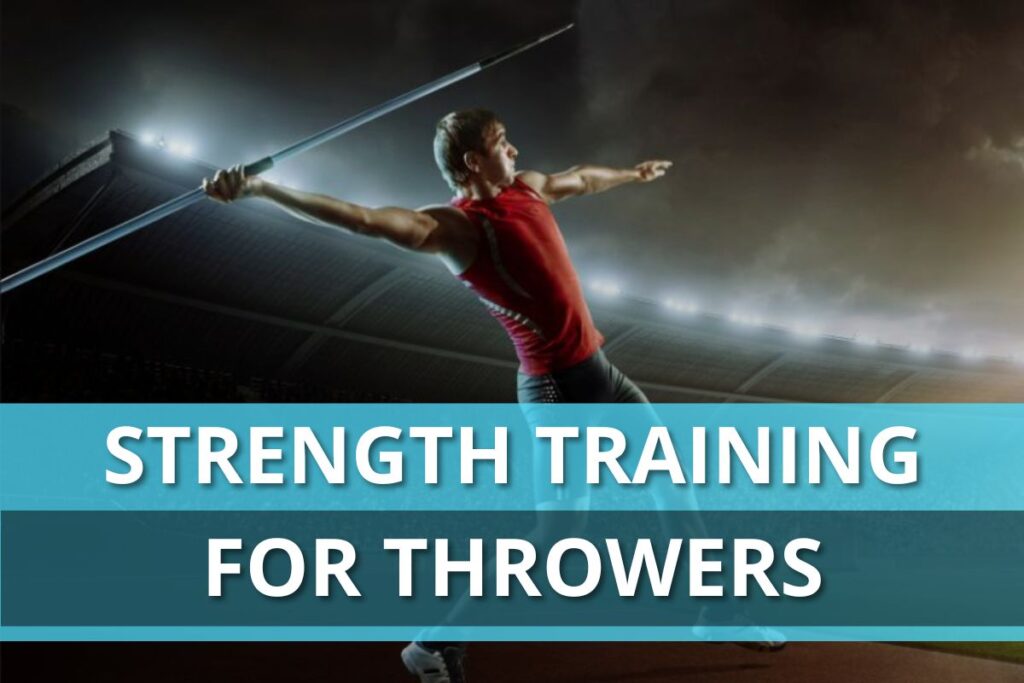
What’s Strength Training for Throwers
Whether you throw a shot put, discus, or javelin, strength training should be a vital part of your training program. Adding a strength training program to your routine will help increase power, speed, and overall athleticism.
With adequate strength, a thrower can get into the key positions to perform the technical drills or perform a quality throw.
When a thrower is weak, they will tend to put themselves into incorrect positions to overcompensate for their lack of strength. This can lead to poor performance and a greater risk of injury.
Benefits of Strength Training for Throwers
Incorporating a strength training program into your throwing program can provide numerous benefits, including:
More Power and Explosiveness
Power and explosiveness are both critical components needed by throwers.
If you can increase your power and explosiveness, you can generate more force with each throw, resulting in more consistent performances and greater distances thrown.
Prevents Injury
Building strength can help to reduce the risk of injury in throwers.
When you strengthen the muscles and joints used while throwing, you can improve your durability and resilience.
Common throwing-related injuries such as shoulder impingement, elbow tendonitis, and lower back pain will not be as much of an issue.
Improved Athleticism
You should add strength training to your program to become a better all-around athlete.
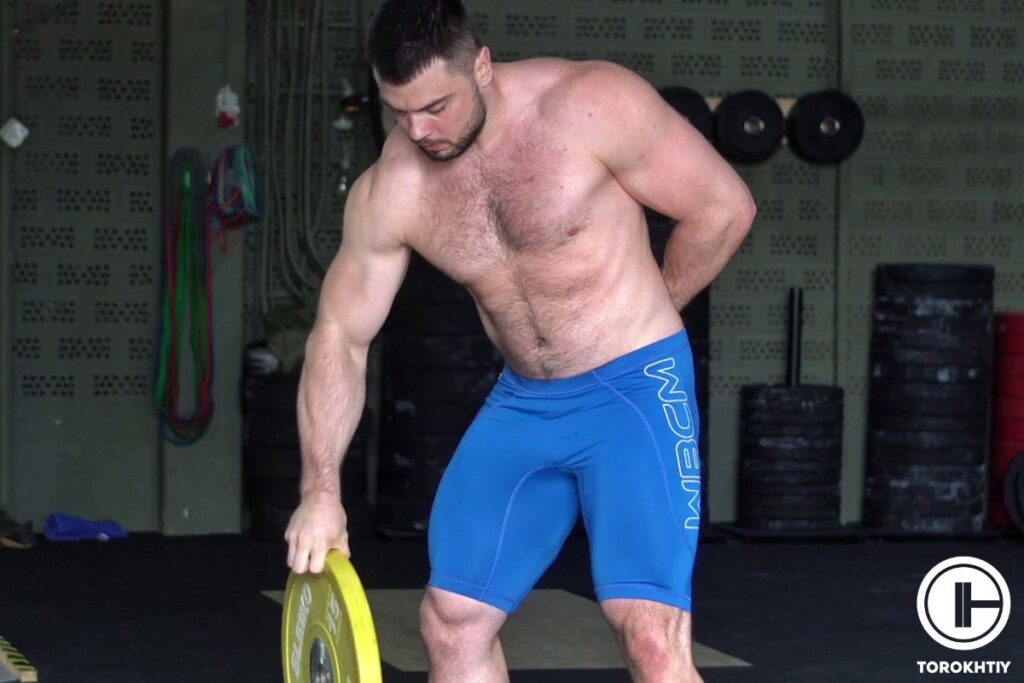
Increased athleticism will lead to improved performances and better overall health and fitness.
Strength Training Exercises for Throwers
The following are some of the best strength training exercises for throwers; make sure you incorporate these exercises into your training program for better performance.
Olympic Lifts
The two Olympic lifts are the Snatch Clean and Jerk. Performing these exercises correctly will offer a wide range of benefits. They will help to develop coordination and flexibility when lifting heavy weights.
Over time Olympic lifts will help you to understand proper weight load, how to align your body correctly, the action of your hips, and how to distribute the weight through your feet.
Squats and Deadlifts
These are both compound exercises that will work multiple muscle groups. They are particularly effective at building strength and power in your lower body.
Performing these exercises regularly will help increase your legs’ explosiveness, a critical factor that will improve your performance in throwing events such as the shot put and discus.
Overhead Presses
You should perform overhead presses to improve strength and stability, which are incredibly important when it comes to throwing events.
Another benefit is that strengthening your shoulders can help prevent injury to them.
Rows and Pull-Ups
These exercises can help build strength in your upper back and arms.
Building strength in these areas will help improve throwing power and consistency in throwing events such as the javelin and hammer throw.
Core Exercises
A strong core is essential for injury prevention and will help generate power and explosiveness during throwing movements.
Consider core exercises such as planks, Russian twists, and hanging leg raises to improve core strength and stability.
Banded Exercises
Using a resistance band can be an effective way to build strength while replicating the movement of your throws.
Resistance bands can strengthen those smaller accessory muscles often missed when performing a strength program. This can help reduce the risk of injury and aid with recovery too.
Medicine Ball Exercises
Using a medicine ball is another way to replicate the throwing movement while helping increase overall strength and explosiveness. Two exercises you should consider using a medicine ball would be the squat and the bench press.
With the squat, you will hold the medicine ball while squatting, then throw it overhead at the top of the squat. For the bench press, you will use a similar approach and throw the medicine ball into the air at the top of the movement.
Key Factors in Throwers’ Strength Training Routine
There are numerous factors to consider when designing a thrower’s strength training routine. Here are some of the factors:
Identify Your Strengths and Weaknesses
Before you can start creating a strength training plan, you will need to assess your strengths and weaknesses.
You can do this in various ways, but one of the most effective is filming your throwing technique.
Set Specific Goals
Once you have identified your strengths and weaknesses, you must set specific goals.
Some sample goals include increasing your 1RM or reducing your risk of injury.
Develop a Structured Training Plan
Your training plan should be structured so that you are not wasting your time doing random workouts and training toward your goals. This training plan should involve a variation in intensity, volume, and frequency over time to coincide with your strength increases.
Following this plan will ensure you see progress without overtraining and potential burnout
Focus on Compound Exercises
Compound exercises work multiple muscles at once, so they are a great idea to maximize your strength gains.
Incorporate Plyometric Training
You can improve your power and explosiveness, both critical for throwing events, by incorporating plyometric training into your workouts.
These plyometric exercises should involve explosive movements such as hopping or jumping.
Follow us!

Free!
Get a 2-week Weightlifting Program as a bonus for the subscription to kickstart your training plan!

Free!
Consider the Frequency of Strength Training
How often you train is an essential factor to consider. It will depend on several factors, too, such as your training experience, overall workload, and schedule.
Typically a thrower would benefit from weight training around 2-3 times weekly.
Take Time to Recover
It would help if you rested between workouts to give your body time to recover and for your muscles to heal.
While resting, you should consider foam rolling, stretching, and massage to aid your recovery.
Throwers Strength Training Programming
Prep Phase
This first phase is designed to increase your base level of fitness and strength. Typically it would help if you tried to avoid performing any strength training on the days you are doing any throwing practice.
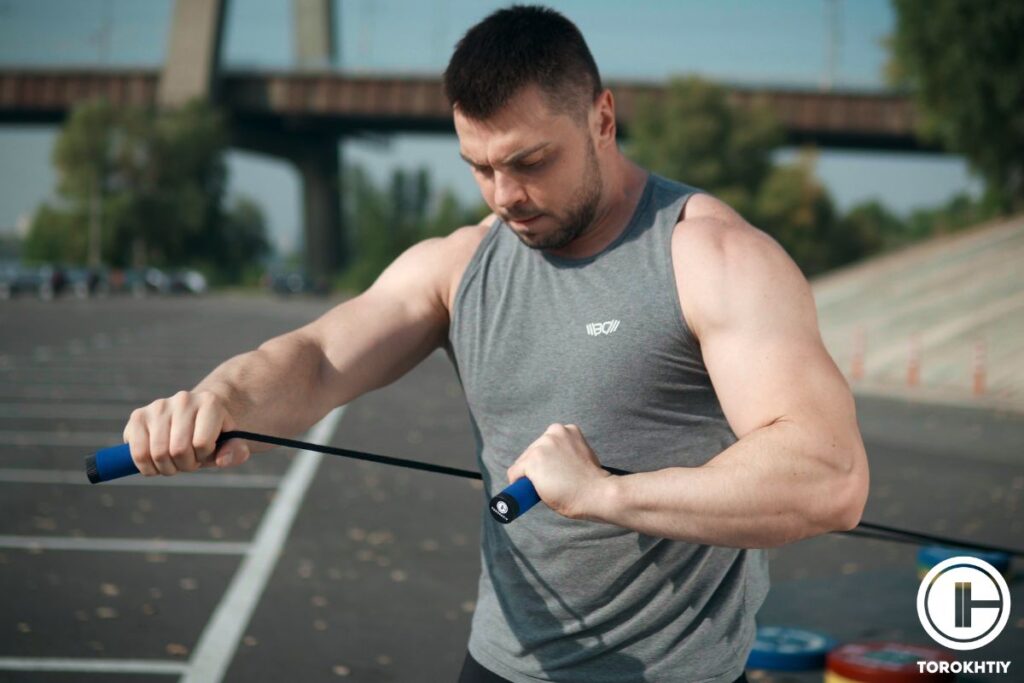
The following exercises would offer a good workout:
At this stage, you should work out 2-3 times per week, performing 3 sets of 12 repetitions of each exercise, with a warm-up and cool down. The rest period between sets should be between 60-90 seconds.
Strength Training Phase
The second phase is when you will build the most strength and power. Again, you will be performing the same exercises, but this time aiming to lift 60-70% of your 1RM.
It would be best if you aimed to perform 5 sets of 6 repetitions, with a 2-3 minute rest between sets.
Competition Phase
The final phase is designed to maintain strength and power while preparing for a competition.
You will stop lifting heavy weights at this stage, instead opting for a lighter load but faster repetitions.
Performing the same exercises but at only 40-60% of your 1RM. The rest between sets will be down to just 1-2 minutes.
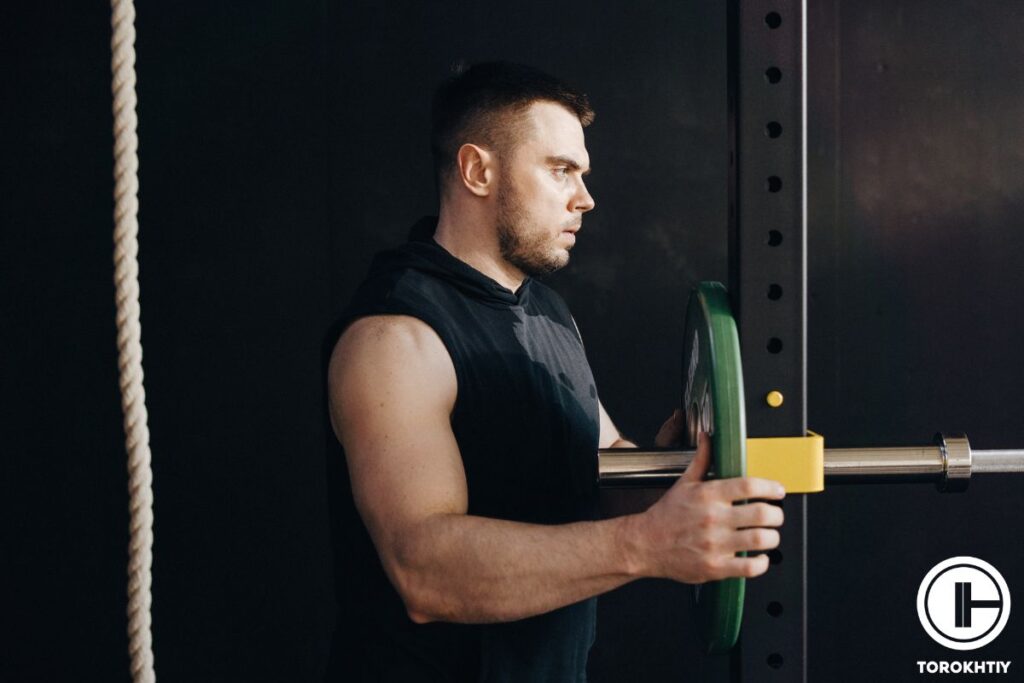
Day 1: Explosive Power and Strength
1. Clean and Jerk: 3 sets x 3 reps
Focus on explosive hip drive and controlled movement
2. Back Squats: 4 sets x 6 reps
Emphasize depth and controlled tempo
3. Bent Over Row: 3 sets x 8 reps
Focus on scapular retraction and control
4. Paloff Press: 3 sets x 10 reps per side
Emphasize core engagement
Day 2: Lower Body Power and Conditioning
1. Snatch: 3 sets x 4 reps
Focus on explosive movement and full extension
2. Deadlifts: 4 sets x 6 reps
Maintain a flat back and emphasize hip drive
3. Banded Reverse Squats: 3 sets x 10 reps
Use moderate resistance and focus on form
4. Barbell Walking Calf Raise: 3 sets x 12 reps
Emphasize stability and controlled motion
Save it for easy access!
Bookmark this page now to access the program and instructional videos anytime, anywhere.
Stop wasting time searching during your gym sessions.
Day 3: Upper Body Power and Core Stability
1. Overhead Press: 4 sets x 6 reps
Maintain a strong core and steady tempo
2. Pull-Ups: 3 sets x max reps
Focus on a controlled descent
3. Atomic Landmine Rotations: 3 sets x 8 reps per side
Emphasize rotational power and control
4. Adductor Plank Raise: 3 sets x 30 seconds per side
Focus on core stability
Volume and Intensity Guidelines:
Warm-Up: Begin each session with dynamic mobility and activation exercises.
Rest Intervals: Take 2 minutes between compound lifts and 1-1.5 minutes for accessory exercises.
Load: Start at 50-60% of maximum capacity, progressively increasing the load.
Accessory Exercises: Use moderate weights with a focus on form and stability.
Mobility and Recovery Tips:
- Incorporate mobility exercises targeting the hips, shoulders, and back.
- Use foam rolling to alleviate muscle tightness.
- Stay hydrated, and prioritize sleep and nutrition for recovery.
Further Training Tips for Throwers
The following are some general tips to consider when creating a strength training plan for throwers:
- Remember that every athlete has individual needs. It would be best to consider their age, gender, and other factors before creating a strength training program.
- Always warm up and cool down when strength training.
- You should perform every exercise with good form to avoid injury.
Basic Equipment You Need
To incorporate strength training into your regime, you will need some basic equipment. You should consider the following:
Resistance Bands
Resistance bands are an affordable way to add resistance to your training.
They come in various resistances and are a great way to replicate the throwing movement.
Medicine Ball
A medicine ball can also help replicate the throwing movement plus will help increase power and explosiveness when used alongside plyometric exercises.
Barbell and Weight Plates
If you want to perform compound lifts and Olympic lifts, then a barbell with a suitable amount of weight is essential.
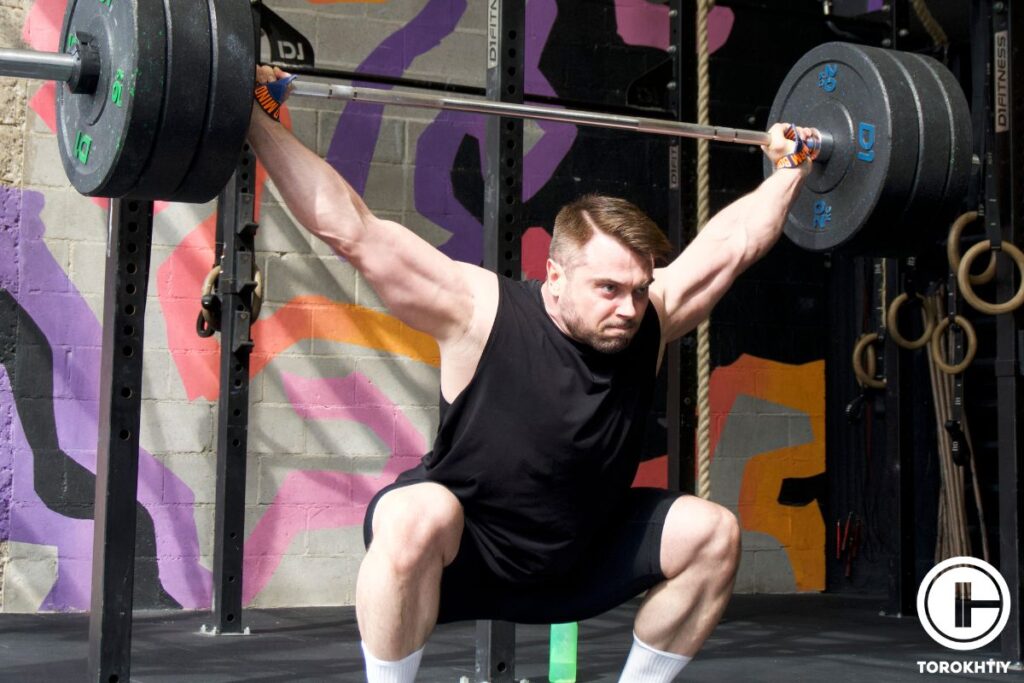
For many, the cost and lack of space would make them impractical; however, if you want to see improved results, they would be worth the investment.
Flat Bench
For example, you would need a flat bench to perform specific movements, such as the bench press.
Again, if space and budget allow, this exercise equipment would be an essential purchase.
Weightlifting Belt
A weightlifting belt can help provide support for your back when performing many of the compound movements.
If you plan on purchasing a barbell and weights, consider a belt too.
FAQ
What Lifts Are Best for Throwers?
Olympic lifts such as the Clean, Snatch, and Jerk are the best for throwers. Performing these exercises with good form will help to develop strength, power, coordination, and flexibility.
Does Weightlifting Help Throwers?
Yes, weightlifting will help throwers. A strength program will improve explosiveness and will improve athleticism.
How Often Should a Thrower Lift Weights?
A thrower should consider weight training 2-3 times a week. This will allow adequate time for recovery while giving time to work on the technical aspects of your training.
Conclusion
Strength training is an important aspect of any training program for throwers. It can help improve power, explosiveness, and athleticism, while also helping to reduce the risk of injury.
Consider following the tips above to start seeing improvements in your throws. You may even see some personal bests being broken.
Please leave a comment below if you have any questions or feedback on weight lifting for throwers.
Also read:
- Strength Training for Hockey Players
- Weight Lifting for Jiu Jitsu
- Weight Lifting for Volleyball
- Strength Training for Golf Players
- Military Workout Routine
- Strength Training for Swimmers
- Strength Training for Tennis Players
- Strength Training for Basketball Players
- Medicine Ball Guide
References:
- Resistance Training with Single vs. Multi-joint Exercises at Equal Total Load Volume: Effects on Body Composition, Cardiorespiratory Fitness, and Muscle Strength // NCBI: https://www.ncbi.nlm.nih.gov/pmc/articles/PMC5744434/
- Effects of plyometric training on endurance and explosive strength performance in competitive middle- and long-distance runners // NCBI: https://pubmed.ncbi.nlm.nih.gov/23838975/
- Foam Rolling for Delayed-Onset Muscle Soreness and Recovery of Dynamic Performance Measures // NCBI: https://www.ncbi.nlm.nih.gov/pmc/articles/PMC4299735/
- 10 Medicine Ball Moves to Tone Every Muscle in Your Body // HealthLine: https://www.healthline.com/health/fitness-nutrition/medicine-ball-workout
- Photos by Torokhtiy Media Team; Dmytro Aksonov, Canva.com.
Why Trust Us?
With over 20 years in Olympic weightlifting, strength training, nutrition coaching, and general fitness our team does its best to provide the audience with ultimate support and meet the needs and requirements of advanced athletes and professional lifters, as well as people who strive to open new opportunities and develop their physical capabilities with us.
By trusting the recommendations of our certified experts in coaching, nutrition, and sports training programming, as well as scientific consultants, and physiotherapists, we provide you with thorough, well-considered, and scientifically proven content. All the information given in the articles concerning workout programming, separate exercises, and athletic performance, in general, is based on verified data.
The product testing process is described in more detail here.
Author: Sergii Putsov
Head of Sport Science, PhD
Best Results: Snatch – 165 kg,
C&J – 200 kg
Sergii Putsov, Ph.D., is a former professional weightlifter and National team member, achieving multiple medals in the 94 kg weight category at national competitions. With a Master’s degree in “Olympic & Professional Sport Training” and a Sport Science Ph.D. from the International Olympic Academy, Greece, Sergii now leads as the Head of Sport Science. He specializes in designing training programs, writing insightful blog articles, providing live commentary at international weightlifting events, and conducting educational seminars worldwide alongside Olympic weightlifting expert Oleksiy Torokhtiy.
Reviewed by: Oleksiy Torokhtiy
Olympic Weightlifting Champion, PhD in Sport Science
Best Results: Snatch – 200 kg,
C&J – 240 kg
Oleksiy Torokhtiy is a professional athlete boasting 20 years of experience in Olympic weightlifting. With multiple European and World titles under his belt, he has showcased his prowess in two Olympic Games (Beijing 2008 and London 2012). Upon concluding his illustrious career, Oleksiy dedicated himself to coaching. By 2022, he had conducted over 200 weightlifting seminars worldwide. He is the visionary behind an international sportswear and accessories brand known for its motto, “Warm Body Cold Mind.” Additionally, he is an esteemed author and the creator of a series of training programs and eBooks.




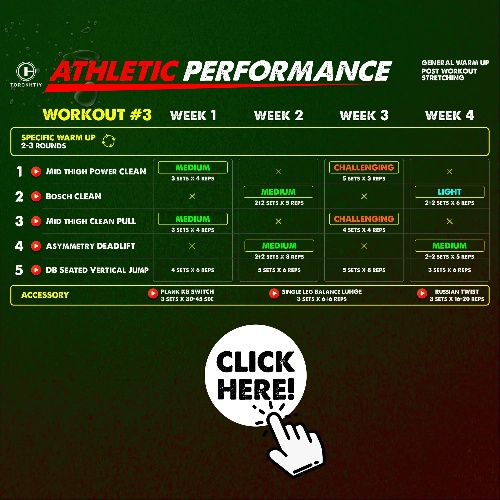


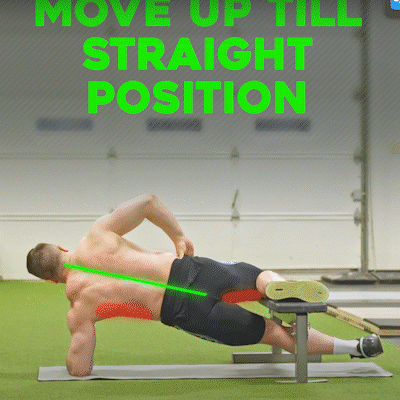
Still have questions after reading our article? Unlock your full potential by engaging with our experts and community! Don’t hesitate — leave a comment below and Sergii Putsov will provide a personalized answer and insights to help you reach your goals.